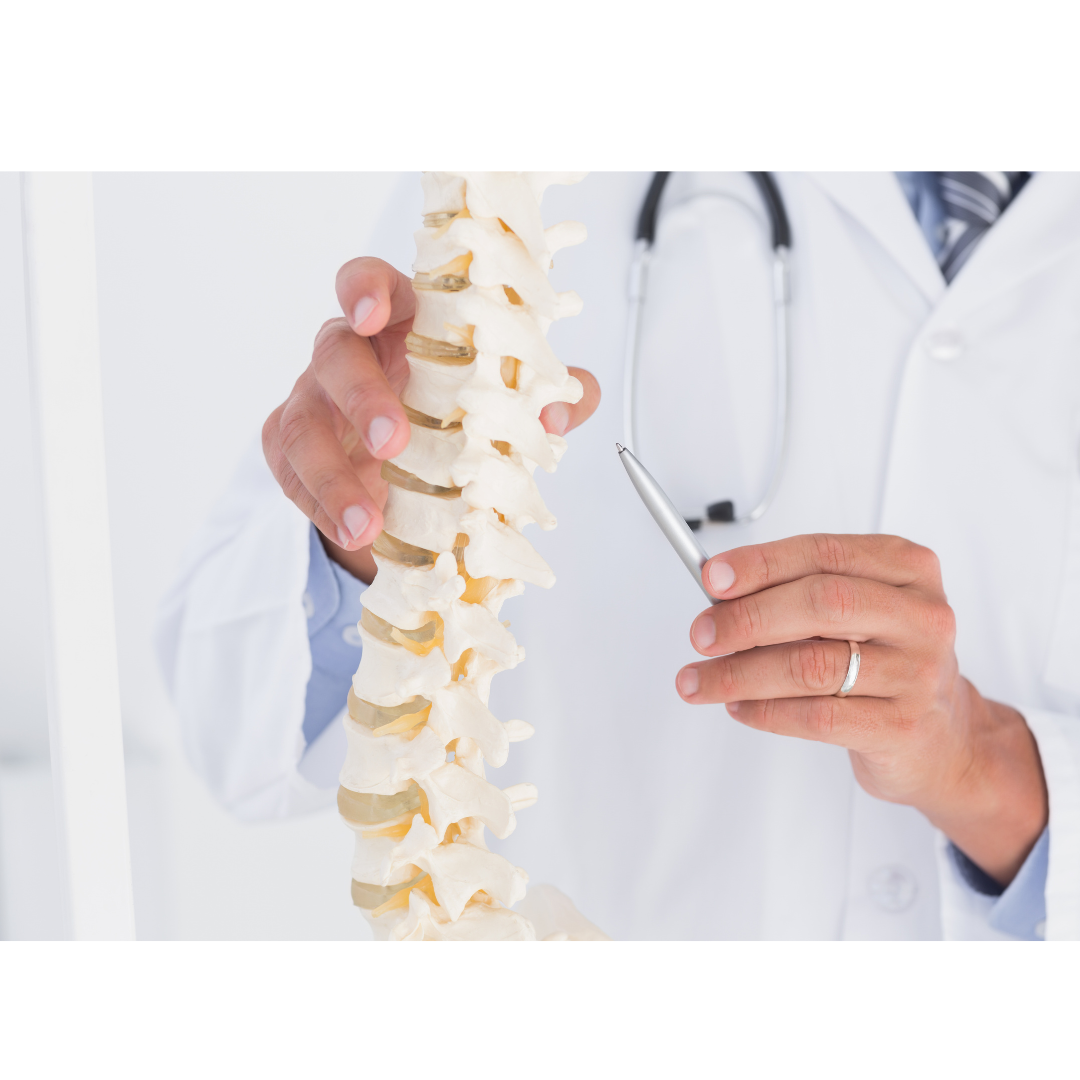As a veteran who has been diagnosed with multi-level degenerative disc disease (DDD), you may be curious about how this condition affects your eligibility for disability benefits. Perhaps you have questions about how much disability is awarded for degenerative disc disease or what you can do if you are unable to work due to your disability. In this blog post, we will explore the answers to these and other questions you may have about degenerative disc disease.
What is Multi-Level Degenerative Disc Disease (DDD)?
Multi-level degenerative disc disease refers to the degeneration of the discs that cushion your spinal vertebrae. Degenerative disc disease is commonly found in the cervical (neck) and lumbar region (lower back). As we age, these discs lose their ability to absorb shock and can become brittle, leading to bulging herniation, and other symptomatic issues. When the degeneration is more severe, it can result in multi-level disc disease, which is when multiple levels of the spine are affected.

Symptoms and Types of Degenerative Disc Disease
Degenerative disc disease is a condition that occurs when the discs between the vertebrae of the cervical spine or lumbar spine deteriorate or break down, leading to pain and other symptoms. Common symptoms include back pain, cervical pain, sharp pain, numbness or tingling in the arms or legs, and weakness in the arms or legs. Depending on the severity of the degeneration, there are two types of degenerative disc disease: type I (pain only) and type II (pain plus neurological deficits). Type I is characterized by pain that may increase with activities such as bending, lifting, twisting, standing, and sitting pain; while type II is associated with numbness or tingling in one or both arms/legs.
Degenerative disc disease is usually treated with spinal injections and medications, but in severe cases, surgery may be necessary to repair the damaged spinal discs.
Is Degenerative Disc Disease Considered a Disability?
Yes, degenerative disc disease can be considered a disability, depending on the severity of the condition. It is a condition that results in pain, instability, and mobility issues which can interfere with an individual's ability to perform daily activities and work-related tasks.
Degenerative disc disease may be rated at 10%, 20%, 30%, 40%, 50%, or 100%. The most common disability evaluations assigned are 10% or 20%.
What Evidence Do You Need to File a Claim for Degenerative Disc Disease?
To submit a claim for degenerative disc disease to the VA, you will need a description of the events that led to your injury during active duty, a current medical diagnosis of degenerative disc disease, and a nexus letter stating the injury from service is directly related to your current condition.
Medical Evidence To Support Your Disability Claim With Degenerative Disc Disease
When submitting a claim for degenerative disc disease to the VA, medical evidence is needed to confirm the presence of the illness. This can include imaging studies such as X-rays, MRI scans, or CT scans. Medical records documenting symptoms that are consistent with degenerative disc disease may also be useful in supporting the claim. In addition, reports of physical examinations by a qualified physician hand objective tests such as electromyography can provide evidence of disability due to the condition. All medical evidence provided must be up to date and from reliable sources such as specialists or recognized medical facilities.
Can a Person Work with Degenerative Disc Disease?
A veteran who is suffering from degenerative disc disease pain may find it challenging to maintain employment, especially if the condition causes severe pain or limits their mobility. In such cases, the veteran may be eligible for Total Disability Individual Unemployability (TDIU) benefits through the Department of Veterans Affairs (VA).
To apply for TDIU, the veteran must provide medical evidence that proves they are unable to work due to their service-connected disability. This evidence can be obtained through VA medical examinations or by submitting medical records from private doctors.
The first step in applying for TDIU is to file a claim with the VA. The veteran will need to complete and submit VA Form 21-8940, which is also known as the Veteran’s Application for Increased Compensation Based on Unemployability.
Once the VA receives the claim, they will review the veteran’s medical records and decide about their eligibility for TDIU benefits. If the VA approves the claim, the veteran may be entitled to receive compensation at the 100 percent disability rate, even if their service-connected disability is rated at less than 100 percent.
What are Common Secondary Conditions Related to DDD?
Secondary service connection is a process through which a veteran can receive disability compensation for a condition that is not directly related to their military service but is caused by a service-connected disability. This process recognizes that a primary service-connected disability can lead to the development of other conditions over time. Here are a few common secondary conditions related to degenerative disc disease.
Radiculopathy
One of the most common secondary conditions related to DDD is radiculopathy, which occurs when the nerve roots that emerge from the spinal cord become compressed or irritated. This can happen as a result of changes in the shape or alignment of the vertebrae caused by DDD. When this happens, patients may experience shooting pain, weakness, or numbness in the affected areas. Radiculopathy can be a secondary condition to DDD because it arises as a result of the underlying degenerative changes in the spine.
Urinary Frequency or Incontinence
Degenerative Disc Disease can also cause urinary frequency or incontinence. Urinary frequency is caused by damage to the nerves that control your bladder, often due to a herniated disc in the lower back compressing or irritating surrounding nerve tissue.
Bladder control issues are often overlooked in veterans, particularly in the early stages of urinary frequency where there may be no noticeable symptoms. However, if you are dealing with urinary frequency or incontinence, it may be due to your degenerative disc disease.
Myelopathy
Myelopathy can be caused by spinal cord compression from degenerative disc disease. Myelopathy can lead to spinal stenosis or other serious neurological issues. It is a rare condition but if diagnosed could be a result of the veteran's degenerative disc disease. Symptoms are similar to radiculopathy but also include loss of urinary or bowel control, and increased reflexes in the arms or lower extremities.
Mental Health
It is important to remember that mental health can be secondary to your condition in some cases. The emotional toll of dealing with the physical limitations and severe pain caused by DDD can lead to depression and anxiety, which can in turn compound your difficulties. We often see veterans who deal with chronic pain develop a mental health condition, as a result.
If you are service-connected for degenerative disc disease and have developed a mental health condition, as a result, you may be entitled to service-connection on a secondary basis.

Here's what a disability examiner looks for in a DDD disability claim
After you file a disability claim the VA may schedule you for a Compensation & Pension exam (C&P Exam). A C&P Exam is conducted by a VA medical examiner who performs a physical examination for the specific medical condition for which you are seeking compensation. The examiner will ask you a series of questions related to your medical history, current symptoms, and how your condition has impacted your life. These questions are designed to assess the level of your impairment and determine whether it is related to your military service.
During the exam, the VA examiner will likely ask you some of the same questions your doctor asked during previous medical appointments. However, the VA examiner may also ask additional questions that your doctor did not ask, as they are using a different set of criteria to assess your condition. It's crucial to note that the VA examiner is not providing medical treatment; their primary role is to evaluate your condition and determine whether it is service-connected.
The examiner will ask specific questions related to the level of pain, the duration of your symptoms, functional limitations, and how they have affected your ability to perform daily activities. The examiner will also perform testing to evaluate your range of motion.
After the physical exam, the VA examiner will evaluate all the information regarding service connection. They will send their findings to the Regional Office (RO), which will decide your disability claim. If the RO finds that your condition is service-connected, you'll be eligible for disability compensation. The rating assigned will be based on the frequency, severity, and duration of symptoms, including painful motion, limitation of range of motion, and functional loss or impairment.

Tips on Winning Disability for Degenerative Disc Disease
If you are suffering from disc degeneration it is important to understand how to get disability claims granted. First, make sure you have all the necessary medical documentation and records that show your diagnosis and treatment plan. You should also provide evidence of any limitations in daily activities caused by your condition including any symptoms of muscle weakness and intense pain. Additionally, it may be helpful to include letters from family members or friends who can attest to how your disc degeneration has impacted your life. Finally, if you are denied benefits, don’t give up; consider appealing the decision with help from an experienced disability attorney.
Get Regular Medical Treatment
Regular medical treatment is essential to help support your claim for degenerative disc disease. Without proper medical treatment, it is difficult for the VA to accurately assess your condition, the severity of pain, and the effects the condition has on your overall quality of life.
Regular visits to a doctor can help monitor the progression of the disease, list any treatments and provide insight as to the severity of your condition. Regular visits also help with providing supporting documentation on the worsening of your symptoms. This may include prescription drugs, over-the-counter medications, physical therapy, or even surgical options depending on how severe the case is. Additionally, regular checkups can help identify any changes in symptoms or other health concerns that could be related to degenerative disc disease and help identify any secondary conditions you may be entitled to. You also want to include any objective evidence such as MRIs and CT scans.
Mention Your Difficulties to Your Medical Doctor
Mentioning your difficulties to your medical doctor is an important step in the process of diagnosing and treating degenerative disc disease. Your doctor needs to understand the full extent of your pain and other medical problems to correctly diagnose the condition. By being honest about your struggles, you can make sure that your doctor is armed with all the information needed to make an accurate diagnosis. Furthermore, by discussing these difficulties with your doctor, you’ll be able to provide additional support for your claim.
Obtain Statements in Support
To help increase your chances of obtaining service connection for degenerative disc disease, have family members write a Statement in Support explaining what they observe as it relates to your degenerative disc disease.
When writing a Statement in Support of Claim, family members should provide specific details and examples to help illustrate the veteran’s condition. Here are some types of information that should be included:
-
Details of the veteran’s condition: Provide specific information about the veteran’s diagnosis, disabling symptoms, and limitations. This can include information about chronic pain, pain levels, mobility issues, or other physical or mental health symptoms.
-
Examples of how the condition affects daily life: Describe how the veteran’s condition affects their ability to perform daily activities, such as cooking, cleaning, or personal care tasks. Provide specific examples of how the veteran’s disabling symptoms make these activities difficult or impossible.
-
Information about treatment and medication: If the veteran is receiving treatment or taking medication for their condition, provide this information. Include details about the effectiveness of the treatment and any side effects or complications.
-
Descriptions of the veteran’s behavior: Describe any changes in the veteran’s behavior or personality since their service-connected disability began. This can include information about mood swings, irritability, or other mental health symptoms.
-
Personal observations: Provide any personal observations about the veteran’s condition, including any changes over time. This can include observations about the veteran’s demeanor, ability to concentrate or remember things, or their overall quality of life.
Overall, the family member’s Statement in Support of the Claim should provide a detailed and comprehensive picture of the impact the veteran’s service-connected disability has had on their life and well-being. By providing specific examples and details, the statement can help the VA make an informed decision about the veteran’s disability compensation claim.
How Can A Disability Lawyer Help?
An experienced disability attorney can provide invaluable assistance to veterans with disability claims. At Heidi Hrabcak & Associates, we are skilled in understanding the rules, regulations, and laws governing benefits from the Department of Veterans Affairs. We have experience in navigating degenerative disc disease cases, so we can help veterans get the compensation they deserve. We can also assist with appeals when a veteran has been denied benefits.
If you or a loved one needs help obtaining disability benefits, reach out to us today for a free case evaluation.









